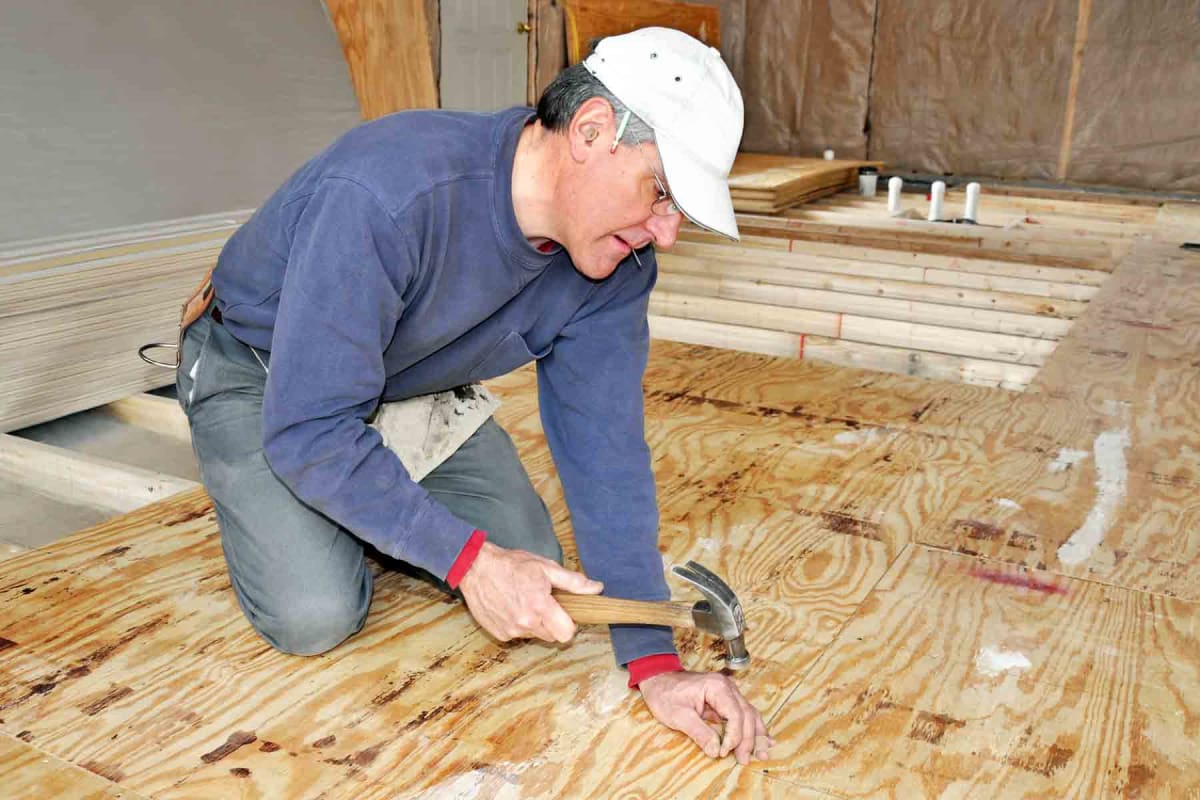
Find subfloor repair contractors near me
Find subfloor repair contractors near me
Confirm your location to see the best subfloor repair contractors in Columbus.
Zip code
Find subfloor repair contractors near me
Confirm your location to see the best subfloor repair contractors in Columbus.
Zip code
Top 10 subfloor repair contractors near you
Homeowners agree: these subfloor repair contractors are highly rated for knowledge, experience, communication, and more.
23+ years in business
Columbus, OH
started working with a father-son business for new highend home builders like " bob web, newberry, p&d,etc. in dublin,powell,deleware,etc.installing tile,hardwood and then went out to aroura, co. for hardwood sand and finishing training so i could learn to sand,stain,finish hardwood. Soon after training I started my own business for same builders and they liked my work so much they had me refinish their personal homes. So as technology was changing i wanted to know how to install the new showers systems from wedi and was certified in that as well. about the same time new construction was drying up, I got married and moved just south of columb...
Showroom Floors
5.0(1)
19+ years in business
Westerville, OH
Rex W. says, "
Darren Morgan and his Company Showroom Floors, Ltd were amazing to work with during the construction of our new home. He was able to explain the floor possibilities that we had to chose from and the steps it would take to perform the work. Then he was able to schedule the work to the construction schedule and completed the work on time. We love our floor and highly recommend Showroom Floors, Ltd" Read more
Mr. Handyman Of Westerville And Delaware County
5+ years in business
Powell, OH
Mr. Handyman of Westerville and Delaware County, established in 2020, is a highly reputable business that serves Columbus, OH, and surrounding areas. They are renowned for their exceptional commitment to providing high-quality service at fair and honest prices, underpinned by a "Done Right Promise". With an impressive customer service record, they boast over two hundred 5 Star Google reviews. Their team of professionals is fully insured, background checked, bonded, and drug tested, offering peace of mind to customers. This veteran-led business is a symbol of trust in the local community.
Kimberling Interiors LLC
23+ years in business
Pataskala, OH
We provide the best possible quality each and every time. We love what we do helping people transform there homes look and feel. With our experienced staff we can do virtually anything when it comes to hardwood flooring.
Twiga Flooring
9+ years in business
Columbus, OH
Founded in 2016, Twiga Flooring is based in Columbus, OH, and caters to its surrounding areas. This ethical and professional company specializes in the installation of interior and exterior floor and wall surfaces, including tile, wood, and stone. They are dedicated to delivering prompt service and superior customer satisfaction. Twiga Flooring prides itself on its ability to get the job done right the first time, always working closely with customers to meet their specific needs.
Pro Flooring Installers Columbus
At Pro Flooring Installers Columbus, we pride ourselves on transforming spaces with precision and style. With a dedicated team of skilled professionals, we specialize in finish carpentry, tile, and floor installations and repairs. Serving the heart of Columbus, our commitment is to deliver exceptional craftsmanship and customer satisfaction on every project. Whether you're renovating or starting fresh, choose us to elevate your space with quality and expertise that stands the test of time.
Armas Home Remodeling LLC
6+ years in business
Columbus, OH
Free estimate is given in case the phone is not answered please leave your message thank you very much
Willis Construction
At Willis Construction, we've got you covered for all your home improvement needs in New Albany, OH! From general contracting to specialized services like kitchen and bathroom remodels, drywall repair, or even appliance installations, we handle it all with expertise and care. Need a new deck or porch, fireplace installation, or just some handyman services? We've got the skills to make your home projects a reality. Whether it's big or small, our commitment is to deliver quality work that transforms your space. Let's build something amazing together!
Integrity Flooring LLC
4.5(2)
6 hires on HomeGuide
37+ years in business
Columbus, OH
Sandra M. says, "Quick reasonable quote. Quick setup of work date. On time for work. Work completed on time.
We hired them for another project soon after the first one was complete. No problems with the work done. Very friendly." Read more
L & L Hardwood Floors
39+ years in business
Hilliard, OH
Our Family Owned Business of almost 40 years.
We specialize in Hardwood Floors install, laying, sanding, repairs and rehab. L V P and Ceramic
We do take up flooring and carpet to get job ready for installation, haul.
Base boards, shoe mold, transitions, etc..
Your Subfloor Repair Contractors questions, answered
Answers to commonly asked questions from the experts on HomeGuide.
Reviews for Columbus subfloor repair contractors
Recent success stories from people in the Columbus area.
PATRICIA K.
I was impressed with the team who removed the carpet from the dining and living room. They made it seem easy. The refinisher,Kristen, was focused on her work bringing my 107 yr. old floors back to life. She even made some modifications to repair the floors in some spots. She loves what she does and she’s really good at it! I called her a miracle worker more than once. Everything was finished on time and within my budget. I would have liked Phil to do a final walk through inspection. I found a doorway threshold section that still had carpet tacks and didn’t get sanded or stained.
Overall, I am pleased with the work.
Integrity Flooring LLC
How HomeGuide works
Search
Search, get cost estimates, contact pros, and book—all for free.
Compare
View profiles, read reviews, check qualifications, and see prices before hiring.
Hire
Ask questions, confirm their availability, and hire the right pro when you're ready.